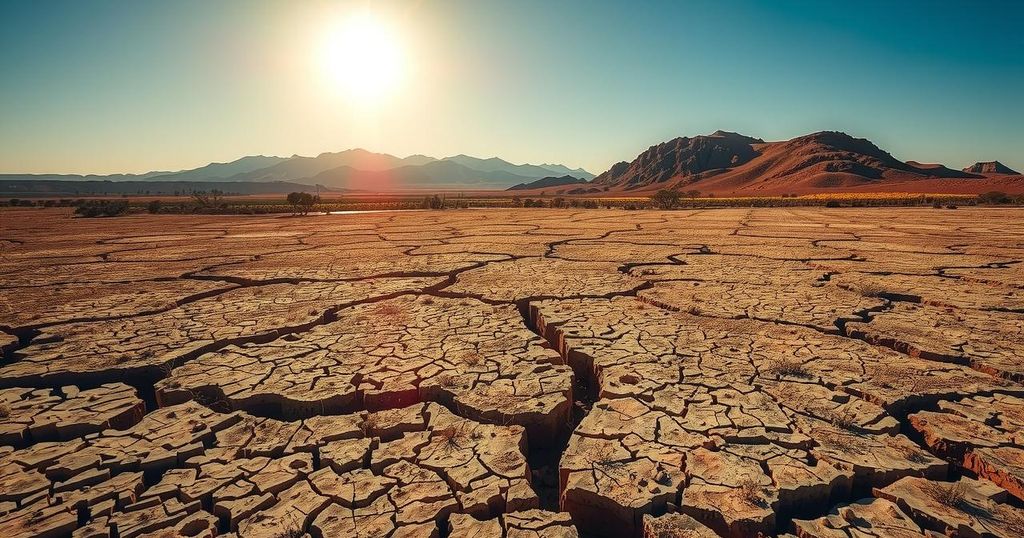The Impact of Climate Change and Infrastructure Issues on Hurricane Helene’s Devastation
A Virginia Tech environmental security expert, Manoochehr Shirzaei, explains that Hurricane Helene exemplifies the convergence of climate change, degraded infrastructure, and human settlement in vulnerable areas, stressing the need for improved disaster preparedness and resilience strategies in light of intensifying extreme weather patterns.
An expert from Virginia Tech specializing in environmental security has emphasized the valuable lessons to be learned from the devastation caused by Hurricane Helene. According to Manoochehr Shirzaei, an associate professor of geophysics, this disaster underscores the detrimental effects of a combination of factors including development in flood-prone areas, insufficient maintenance and management of infrastructure, and the overarching influence of climate change. “The tragic flood event in the southeast U.S. is a poignant example of the confluence of multiple factors, including development in floodplains, inadequate infrastructure maintenance and management, and the specter of climate change, whose compounding effect can amplify the disaster,” noted Professor Shirzaei. As the impacts of climate change continue to escalate, the southeastern United States is increasingly confronted with more erratic and severe weather events. Professor Shirzaei elaborates, stating, “The anomalously high precipitation linked to Hurricane Helene can be partially attributed to a warming atmosphere, which has an enhanced ability to retain moisture.” He further highlights that both observational data and climate models indicate a rising frequency and intensity of extreme precipitation events, a trend that necessitates the implementation of adaptive strategies to lessen the consequences of these intensifying weather patterns. The professor also indicates that the aging infrastructure has significantly contributed to the severity of the disaster precipitated by Hurricane Helene. “Legacy systems, including levees, dams, bridges, roads, and electrical grids, were not originally designed to endure the growing severity of hurricanes exacerbated by climate change. As these structures deteriorate with time, their vulnerability to failure during extreme weather events increases,” he stated. In the wake of Hurricane Helene’s landfall in Florida, which rapidly moved northwestwards and affected various states including Georgia, the Carolinas, Tennessee, and Virginia, the disaster left in its wake devastation, including fatalities and extensive flooding. Shirzaei also pointed out that a significant contributor to the disaster is the prevalent human practice of settling in floodplains, a global trend that has been accelerating in recent decades. “Over the past few decades, the expansion of human populations into flood-prone areas has accelerated worldwide. Many of these vulnerable communities are located in river valleys or downstream of dams, areas particularly susceptible to sudden and significant water discharges, further exacerbating the risk of severe flooding,” he remarked.
The article addresses the intertwined challenges posed by climate change, decrepit infrastructure, and human settlement patterns, particularly in relation to natural disasters such as Hurricane Helene. The expert, Professor Shirzaei, emphasizes that systemic failures in infrastructure alongside environmental changes significantly amplify disaster risks. The topic of climate change remains critical as it pertains to the increasing frequency of extreme weather events, illustrating the urgent need for communities to adopt proactive measures to mitigate these issues. Furthermore, the trend of human settlements in natural floodplains is critiqued as a major contributor to future disasters.
In conclusion, the aftermath of Hurricane Helene serves as a crucial reminder of the multifaceted issues associated with climate change, inadequate infrastructure, and human decisions regarding land use. The insights provided by Professor Shirzaei highlight the necessity for improved preparedness and a reevaluation of development practices in flood-prone areas. As we face escalating weather extremes, it is imperative that communities adopt innovative and adaptive strategies to enhance resilience and safeguard against future disasters.
Original Source: phys.org




Post Comment